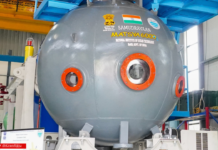What is Space Based Internet?
In January 2015 SpaceX publicly announced Project Starlink, an evolution of Space Internet. The system of Space based Internet is not new to us. It literally means beaming of data signals from the satellite. The traditional way of doing this is through Geostationary satellite which is located at a height of approximately 36000 km over the Earth’s surface.

Pros & Cons of Geostationary Satellite:
The main benefit of using Geostationary satellite to beam data signal is, it can cover larger area, nearly one third of the earth, with the help of one satellite. With the help of three of four satellite the whole earth can be covered.
But beaming data from the height of 36000 km increases the latency, in simple terms it is not a high speed internet that we want nowadays.
Project STARLINK
To provide reliable, uninterrupted, high speed and affordable internet to entire earth American company SpaceX has Started project Starlink. In this project SpaceX will launch 12000 satellites in the Low earth orbit (LEO) to cover entire earth by 2021. To reduce the cost SpaceX is using Falcon 9 rockets because of its reuse capabilities. All the Starlink satellite will use krypton Hall Thrusters. 
On November 11, SpaceX has launched 60 Satellite following its May 2019 launch of first batch of 60 Satellite. The aim of SpaceX is to start its space based internet service in USA and Canada by 2020. But it will happen when at least 400 satellites will be placed in Low earth orbit.
Pros & Cons of Low earth orbit
The low earth orbit is situated at the height of 200 – 2000 km. Due to this the latency would be less as compared to Geostationary orbit means high speed internet will be available.
But satellite at LEO covers less area as compared to Geostationary satellite so more number of satellite is needed to provide the internet on entire earth.

One more disadvantage of LEO satellite is that its speed is nearly or more than double than the Geostationary satellite. So one satellite can cover one area only for few minutes and to provide uninterrupted internet another satellite has to take its place after earlier one move.
According to SpaceX to make this thing possible it needs 42000 satellites, but it has  permission of 12000 satellites from United States Federal Communications Commission (FCC). And 30,000 is pending for FCC approval.
permission of 12000 satellites from United States Federal Communications Commission (FCC). And 30,000 is pending for FCC approval.
Some Concerns & Downsides
Some scientist and astronomers raised their concern over project Starlink. It has several downsides such currently nearly 2000 – 3000 satellites are operational & orbiting around earth and most of them situated at LEO.
Placing 12000 satellites will increase the risk of collisions. Every satellite has a fixed timeline after that they nothing more than debris so it will also increase the space debris which are fatal for operational satellites. Although SpaceX has stated that it will deorbit the satellite once it becomes nonoperational. As a result of this nearly 95% of the satellite will burn-up upon re-entry.
It will increase the “Light Pollution / photo pollution” means the presence of anthropogenic and artificial light in the night environment thus it will disturb astronomy and space researches greatly.
[su_youtube_advanced url=”https://youtu.be/hfa7HRfYAeI” fs=”no” modestbranding=”yes” title=”Detailed Video Solution “]








